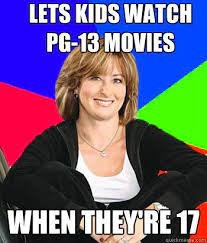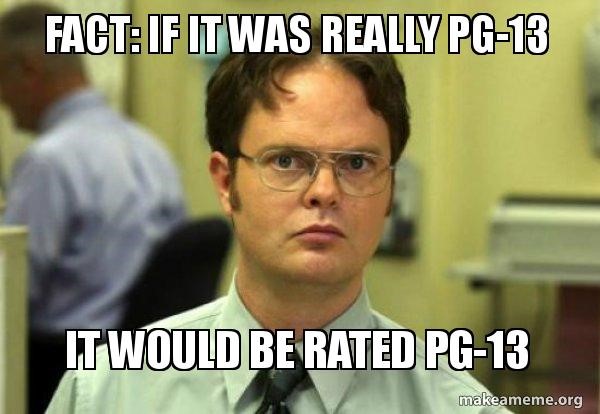Are you going to watch a ‘PG-13’ rated movie at the cinema? This post unpacks the meaning and origin of this expression.
Meaning
The term ‘PG-13’ means ‘Parental guidance for children under 13.’ It’s a rating assigned by the Motion Picture Association of America designed to advise parents on the content in a film or TV series. A movie with a PG-13 rating may have inappropriate content for children under 13 years old, and parents may want to view it before letting their kids watch it.
A PG-13 movie may contain scenes of nudity or involve bad language. There may be excessive violence in the content that’s inappropriate for children to view.
However, the modern idiomatic meaning of the expression is to describe something that’s unimpressive or doesn’t live up to your expectations. If something is ‘tame’ or ‘lame,’ you can call it ‘PG-13.’
Example Usage
"Man, that movie was so PG-13. It didn't deserve an R-rating at all. What did you think of it? Or am I going crazy?"
"Yeah, I thought the party was a bit PG-13 myself. I guess I just had high expectations after hearing everyone else talk about how she throws the wildest parties ever."
"That's for kids, man. I'd give it a PG-13 rating all day. Steven Segal action movies used to be great back in the day. Now they're just hot trash."
"That's so PG-13, girl. Why would you let him take you to the movies for your first date? What are you guys in junior school or something?"
"Yeah, the whole situation was a little PG-13 for my taste. I'm used to stressful encounters back in Iraq, and this pub brawl is a little lame, in my opinion."
"There's no way I'm going back there gain. That's all too PG-13 for me. You guys can hang out there, but I will have some fun in my life. Later."
"I saw this PG-13 movie last night that should have had an R-rating. It's crazy what people rate as okay for kids to watch these days."

Origin
The term ‘PG-13’ originates from the voluntary rating systems for movies instituted in 1984 by the Motion Picture Association of America (MPAA). The first rating categories included ‘G’ (appropriate for all audiences), ‘M’ (mature audiences), ‘R’ (persons under 16 admitted with an accompanying adult), and ‘X’ (no under 17).
The MPAA dropped the ‘M’ category and changed it to PG, and the PG-13 category indicates a film with a “higher level of intensity” in the content. PG-13 content is described as follows.
“May be inappropriate for children under 13 years old. May contain very strong language, nudity (non-explicit), strong, mildly bloody violence, or mild drug content.”
The first movie to receive the ‘PG-13’ rating was the action film ‘Red Dawn,’ released on August 10, 1984.
Phrases Similar to PG-13
- Adult themed.
- X rated.
- M audiences only.
Phrases Opposite to PG-13
- Children’s theme.
What is the Correct Saying?
- PG-13.
Ways People May Say PG-13 Incorrectly
While using the phrase to describe a ‘PG-13’ movie is technically correct, the idiomatic version has the opposite meaning. Using it to illustrate children’s activities is incorrect. It refers to something failing to meet your adult expectations.
Acceptable Ways to Phrase PG 13
You can use the term ‘PG-13’ to describe movies restricted to parental guidance for viewers under the age of 13. However, most people will use it to describe a film they think underperformed to their adult expectations. For instance, if you watch what you thought would be an adult comedy, and the jokes are too clean, you could say it was ‘PG-13’ even if it has an adult rating.
The phrase can apply to more than just movies. For instance, if you watched a rodeo that wasn’t exciting, you could say it was ‘PG-13’ to voice your disappointment. The same goes for subscribing to an OnlyFans account, expecting to see adult content, only to find it’s not what you expected.
